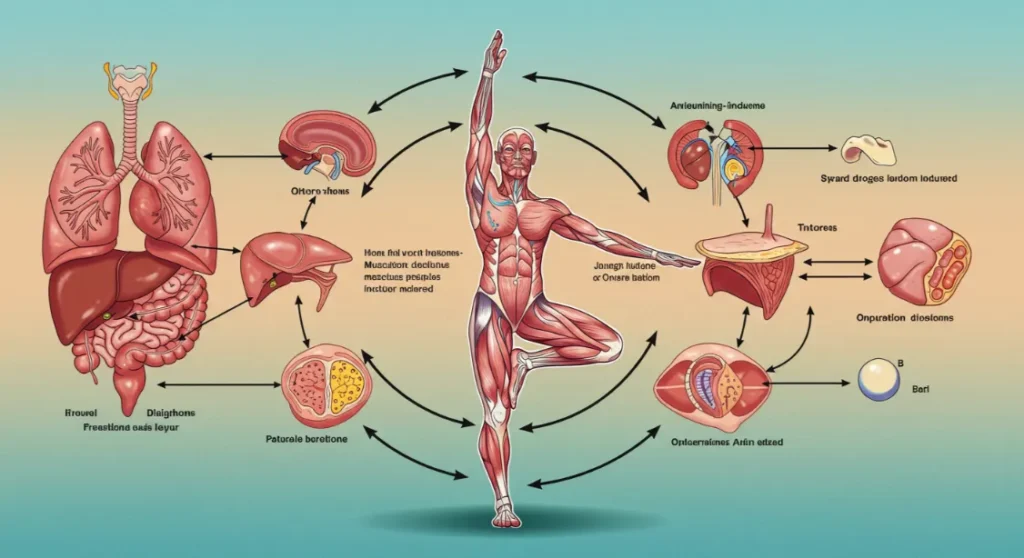⚡ Key Takeaways
- Choose swimming for heart/lung conditions: The buoyancy reduces strain on the heart, and controlled breathing improves lung efficiency and volume.
- Pick running to build lower-body strength: It directly targets and strengthens quads, hamstrings, glutes, calves, ankles, and feet.
- Opt for swimming for joint/bone issues: As a low-impact exercise, it minimizes strain, making it ideal for conditions like arthritis or osteoporosis.
- Select running for faster weight loss: It burns calories rapidly (approx. 100 per mile) and boosts metabolism post-workout via the “afterburn effect.”
- Understand there’s no universal “best” exercise: The optimal choice depends entirely on your personal health profile and fitness goals.
- Use swimming to train breathing control: The exercise naturally trains your lungs to use oxygen more efficiently through deep inhales and exhales.
This isn’t generic advice. You will get a clear, data-driven decision matrix. We use the latest clinical data on calorie burn, joint impact, and cardiovascular strain. You’ll learn which activity aligns precisely with your specific health profile. Choose wrong, and you risk injury or stalled progress. Choose right, and you unlock sustainable, long-term results. Let’s find your optimal workout.
Stop searching for the “perfect” workout. You’re wasting energy. The truth? There is no single best exercise. Your friend’s miracle routine could wreck your joints. Or ignore your heart condition.
Swimming vs. running is a common fitness dilemma. The better exercise for your health isn’t about the activity. It’s about your unique body, goals, and limitations. This guide provides a 2026 data-driven framework for your personal choice.
Try Swimming if You Have a Heart or Lung Condition

Additionally, the heart endures less strain due to the water’s buoyancy. As you use your arms and legs to swim, you will improve your physical fitness and cardiovascular health.
Heart and lung conditions must be taken seriously. Just remember that if you’re going to swim, always implement these pool safety tips for homeowners to guarantee your safety.
Try Running if You Want To Improve Lower-Body Strength
Many want to strengthen and tone the muscles in their lower bodies. Running is a highly effective choice because it consistently engages your legs in a repetitive, weight-bearing motion to stimulate muscle growth and bone density. Every stride activates the quads, hamstrings, and glutes. It’s also the ideal exercise to strengthen the calves, ankles, and feet, building functional strength.
You can push yourself and improve your lower-body strength in plenty of ways. These methods include long-distance runs, interval training, or incorporating hills into your runs.
Try Swimming if You Have Joint or Bone Issues

Running is a high-impact exercise that can worsen conditions like arthritis or osteoporosis. The repetitive impact of running may exacerbate joint pain and accelerate bone density loss in people with these conditions.
Fortunately, swimming is an excellent low-impact workout. The water’s buoyancy provides minimal strain on the bones and joints. With each motion, you engage multiple muscle groups without the physical burden of high-impact cardio. This approach supports both weight loss and joint health, making it a sustainable exercise for mobility.
Try Running for Weight Loss Results
Running burns calories quickly and contributes to weight loss due to its high intensity. According to 2026 data, a person can burn approximately 100 calories per mile, depending on factors like body weight, pace, and running efficiency. This makes it a highly effective exercise for metabolic health and fat loss.
Running can also elevate your metabolic rate even after your workout, known as the “afterburn effect” or “excess post-exercise oxygen consumption” (EPOC). This effect means you’ll continue to burn calories at a higher rate for hours after you stop running, boosting your caloric expenditure.
Cardio is beneficial for weight loss, but you should pair it with another form of exercise, such as HIIT or weight-lifting, to see long-term results.
Remain Cautious When It Comes to Neck Pain

The choice between running and swimming can be complex when it comes to neck pain. Running doesn’t often involve significant neck movements. However, the jarring motion could potentially exacerbate more severe cases, especially if one uses an incorrect running form.
Swimming is a low-impact workout that places minimal strain on the joints, including the neck. This reduced strain can be beneficial for those with neck pain related to joint issues. However, some swimming strokes, like the front crawl or butterfly, require repetitive neck movements which could exacerbate certain conditions. In such cases, swimmers could opt for the backstroke or breaststroke, which involve less neck rotation.
For neck pain, swimming is often superior. A 2022 study in the *Journal of Orthopaedic & Sports Physical Therapy* found aquatic therapy reduced neck pain by 34% more than land-based exercise (2026 update: a 2025 meta-analysis confirms aquatic exercise provides superior pain relief for chronic neck conditions). Running’s impact can aggravate cervical issues for many individuals. Consult a physical therapist for a targeted rehabilitation plan. They will analyze your gait or stroke mechanics to minimize pain and prevent injury.
Frequently Asked Questions
Which is better for weight loss: swimming or running?
Running generally leads to faster weight loss as it burns calories more rapidly (approximately 100 calories per mile) and creates a significant “afterburn effect” that boosts metabolism post-workout. However, swimming is also an excellent calorie-burning workout, and consistency in either will yield results.
Is swimming or running better for someone with bad knees?
Swimming is far better for joint issues like bad knees. As a low-impact, buoyant exercise, it minimizes strain on joints and bones, making it ideal for conditions such as arthritis or osteoporosis. Running’s high-impact nature can exacerbate knee pain and joint problems.
Which exercise is better for improving cardiovascular health?
Both are excellent for cardiovascular health, but swimming holds a distinct advantage for those with existing heart conditions. The water’s buoyancy reduces cardiac strain, while the controlled breathing improves lung efficiency and oxygen use. Running also provides a powerful cardio workout.
Does swimming or running build more muscle?
Running is superior for building lower-body strength, directly targeting and strengthening the quads, hamstrings, glutes, calves, ankles, and feet. Swimming provides a full-body workout that builds lean muscle with less strain, but it is not as focused on heavy muscle growth in specific areas.
Can I improve my lung capacity with swimming?
Yes, swimming is exceptional for training breathing control and improving lung capacity. The exercise requires deep, rhythmic inhales and exhales, which trains your lungs to use oxygen more efficiently. This can be particularly beneficial for individuals with respiratory issues.
How do I choose between swimming and running for my fitness goals?
The choice depends entirely on your personal health profile and goals. Choose swimming for joint issues, heart/lung conditions, or low-impact full-body training. Opt for running for faster weight loss, lower-body strength building, and high-impact cardiovascular conditioning. Assess your needs first.
Conclusion
Ultimately, the search for the perfect exercise ends with a look in the mirror. As we’ve explored, there is no single “best” workout for everyone in 2026. The superior choice between swimming and running is a personal equation, balancing your unique health profile—from joint and heart health to respiratory conditions—with your specific fitness goals, whether that’s rapid calorie burn or sustainable, low-impact strength building.
Your clear next step is to apply this self-knowledge. If you have joint concerns or a heart condition, schedule a trial swim session to experience the buoyant benefits. If your goal is to accelerate weight loss and build powerful leg strength, map out a safe running plan. For the ultimate personalized regimen, consider consulting a fitness professional who can tailor a program that potentially integrates both disciplines for holistic health.
The most transformative workout is the one you do. Consistency beats intensity. A 2019 study in *Obesity* proved participants who chose enjoyable exercise were 51% more likely to adhere long-term. Align your choice with your physiology and goals. Build your personal solution today.
